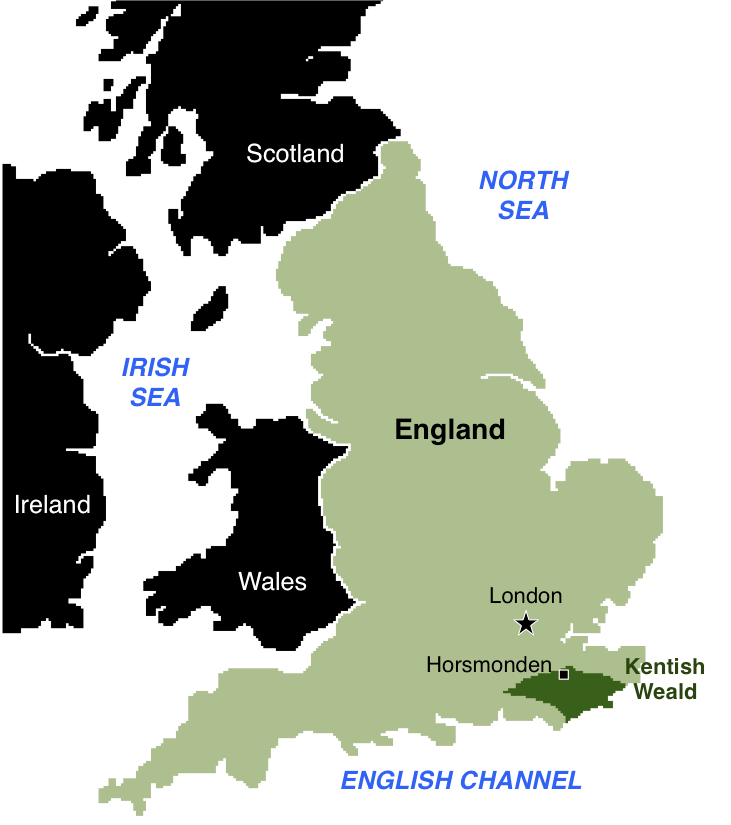Fuggles (UK)
Alpha Acids (%)
4.0 – 5.5
Description
English aroma cultivar. Earthy, herbal, and woody the classic English hop. Was also used extensively as a bittering hop in the past.
Possible Substitutes
East Kent Goldings are another aroma hop variety with an English hop character but less earthy. Styrian Goldings and US Fuggles are the same hops transplanted and grown elsewhere. Willamette is a genetically very similar cultivar derived from Fuggles. Willamette has some similar herbal and earthy flavors, but with some additional citrusy American hop flavor.
Beer Styles
Traditional British-style ales. Especially English Pale Ales and Bitters where it is thought to produce subtle full-bodied hop character. Fuggles are also an excellent hop for English IPAs, Milds, Porters, Stouts, Old Ales, and various Scottish Ales.
Chemical Composition
| Alpha Acids: | 4.0 - 5.0 | % |
| Beta Acids: | 2.0 - 3.3 | % |
| Alpha:Beta Ratio: | 1.8 | |
| Cohumulone: | 24 - 30 | (% alpha-acids) |
| Essential Oils: | 0.8 - 1.2 | (mL/100g) |
| Myrcene: | 25 - 28 | (% essential oils) |
| Caryophyllene: | 9 - 13 | (% essential oils) |
| Humulene: | 32 - 37 | (% essential oils) |
| Farnesene: | 6 - 7 | (% essential oils) |
All chemical composition values aggregated from [4] [5] [6] where available.
Origin and Genetics
Fuggle hops are among of the earliest domesticated hops. They are derived from hops growing wild in the English countryside. The legend is that a chance seedling was found on the farm of George Stace in 1861 near the town of Horsmonden, Kent. The cultivar known as Fuggles was developed from the original plant by Richard Fuggle and first marketed under the name Fuggle Hops in 1875.[1] The names and dates given in this origin story have proven difficult to reconcile with available historical records.[2]
Fuggles grow well in stiff soil that is dense and clay-filled. Thus they could be considered a landrace variety well suited to the climate and soil of the Kentish Weald (a geological feature in southeast England). Fuggles once accounted for the majority of hops produced in England. Production of English Fuggles is currently much lower than at its height. The fungal disease Verticillium wilt decimated production, and now Fuggles are grown as a specialty product for sale to smaller-scale and traditional brewers.[3] Many breweries now rely on small additions of high alpha hops for bittering instead of using large volumes of Fuggles, which are very modest in alpha acid content. In spite of this Fuggles maintains a strong following among craft brewers. Some feel that Fuggles produce a soft and particularly appealing bitterness when used for the bittering addition.
| Geographic Origin of Fuggle Hops |
 |
| Figure 1: England is shown in light green with the Kentish Weald in dark green. Fuggle hops were discovered near the Village of Horsmonden. Later they were cultivated extensively throughout the Kentish Weald. However most Fuggles grown in the UK today are from the West Midlands. |
References
- ^ Percival, John. 1901. The Hop and its English Varieties. http://edsbeer.blogspot.com/2012/03/hop-and-its-english-varieties-by-john.html Retrieved 2013-06-04.
- ^ Cook, Kim. 2009. "Who produced Fuggle's hops?" Journal of the Brewery History Society. Brewery History Number 130. http://www.breweryhistory.com/journal/archive/130/Fuggles.pdf. Retrieved 2013-06-04.
- ^ Horsmonden Kent Village Website. http://www.horsmonden.co.uk. Retrieved 2013-06-05.
- ^ British Hop Association. http://www.britishhops.org.uk, Retrieved 2013-03-22.
- ^ Simply Hops. http://www.simplyhops.co.uk. Retrieved 2013-03-22.
- ^ Daniels, Ray. 2000. Designing Great Beers: The Ultimate Guide to Brewing Classic Beer Styles. Boulder: Brewer's Publications.

